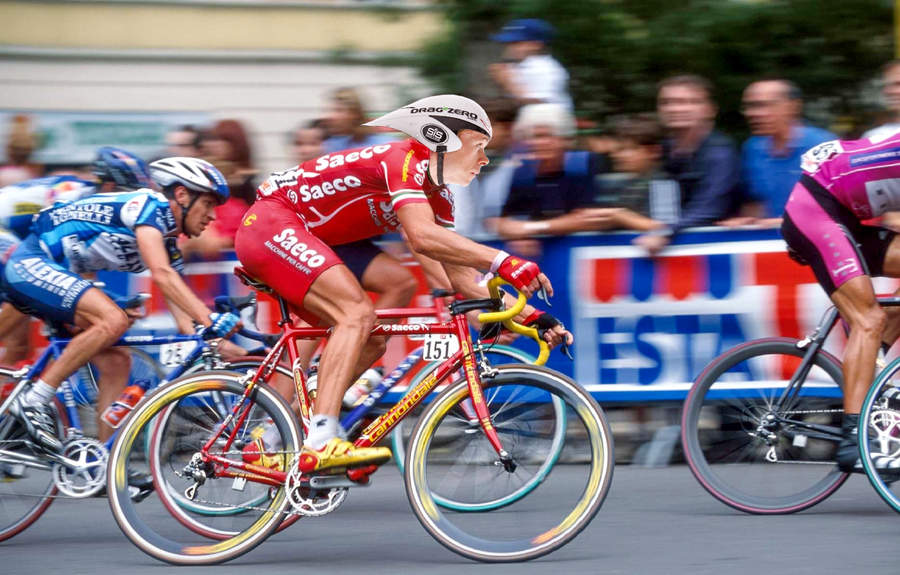Dr Hutch: When did bikes start to cost half the UK average wage?
Modern bikes are better, Hutch admits. But are they five times better?

At the risk of overdoing my Old Man of the Long Road routine, I’m going to tell you about the first decent road race bike I bought. It was a Cannondale CAD3, in an offensively bright shade of red. It had a Time carbon fork that would count as a nice bit of kit today, with Mavic wheels and Shimano Ultegra eight-speed. (Yes, eight-speed. Behold my many sprockets, kids.)
This was, give or take dropping a notch down on the groupset and the wheels, the same bike that the Saeco team were riding in things like the Tour.
The first thing I did with this bike was go round to my friend Bernard’s, knock on his door, then lean casually on the top tube and see for how long he could talk to me without being overwhelmed by envious rage. He managed about ninety-seconds, and subsequently admitted that the effort had nearly killed him.
There’s no way of sugar-coating the price. It was only £1200. I’m afraid that even if you allow for inflation, it’s still only about £1900 now. That was for a top-level pro bike that turned admiring heads wherever I took it. The modern equivalent is probably closer to £10,000, though there’s a lot of variation in the price of top-end models these days.
Now, I’ll admit that modern bikes are better. Even much better – the Cannondale was light and stiff but had a ride like skateboarding over a tin roof, even on the smooth roads of last century. But, seriously, are they five times better? I’d say not.
I think old bikes are seriously under-appreciated. I don’t necessarily mean proper retro stuff, just things that are ten years old, and which a lot of riders would feel ought to be replaced with something new.
Old bikes have so many things going for them. Not least is their value for making excuses. Get dropped on the climb? “Well, look what I’m riding…” That’s almost certainly not why you got dropped, but it’s hard for someone to argue with, especially if they’re riding a £10,000 super bike. If they laugh in your face and tell you that the bike won’t have made very much difference, then they’re going to really struggle when in return you ask them why they blew half the UK average wage on their own bike.
The latest race content, interviews, features, reviews and expert buying guides, direct to your inbox!
Old bikes are held together by exposed bolts. You can unscrew them, take bits off, and screw replacements or upgrades back on again. You can do this without crying, having a nervous breakdown, or imploring your God to let the headset spacers go together this time without fouling the brake cable. (“I’ll stop to lend my pump to strangers. I’ll always wave to other cyclists, even if they are riding cheap bikes. I’ll be good. I promise.”)
Old bikes are easy to get hold of. A friend of mine was recently quoted September 2023 as a delivery date for a top-end bike. If he’d wanted an old bike, well, he already had one. He could just have washed it. Cheaper too.
Old bikes are more distinctive. By the time you’ve swapped a couple of bits, changed the saddle, upgraded the wheels it will be different from everyone else’s. You’ll be 100 yards up the road after the café stop before all the people with nice new bikes have managed to work out whose is whose.
The final advantage of old bikes is more personal. If everyone sticks with their old bikes, then through the magic of the market economy, I’ll be able to afford a new one. And I’ll be able to get it while I’m still young enough to ride it.
Michael Hutchinson is a writer, journalist and former professional cyclist. As a rider he won multiple national titles in both Britain and Ireland and competed at the World Championships and the Commonwealth Games. He was a three-time Brompton folding-bike World Champion, and once hit 73 mph riding down a hill in Wales. His Dr Hutch columns appears in every issue of Cycling Weekly magazine